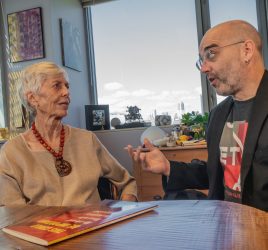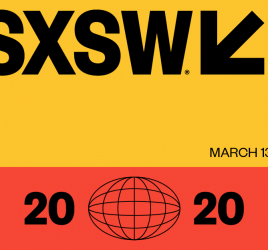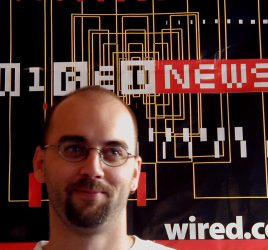A Very SXSW Interactive 2013 Recap
Every year, South by Southwest Interactive changes for me.
When I first started coming in the mid-1990s, I wrote about music and stumbled upon technology. By 1998, I’d largely abandoned the music conference for what we now call Interactive. I was a journalist, then a moderator, then a panelist, and now I’m a mixture of all three when I emcee the SXSX Accelerator finals.
What hasn’t changed for me, though, is that every year SXSW is the most intense, most humbling, and most accessible learning space that I have. Within 10 days, I have the opportunity to fill up on bits of information that I’ll spend much of the next year processing.
This year, I decided to stay out of the mix, and just listen to the summaries that filtered up to me. Here’s what I learned:
2013 is the year of hardware:
A few years ago, I had a conversation with some of the SXSW organizers about the proliferation of social media types. I was concerned that we were seeing a shift from hackers and makers to talkers, and that technological acumen was being pushed aside by second-class punditry.
This year, SXSW leaped that chasm and the hackers and makers re-emerged in a public way (although I’m sure there are still a plethora of the talkers). Nowhere was the more present than with the concept of 3d printers, which was trumpeted by MakerBot’s kickoff presentation and MakieLab’s 3d printed toys project that won the SXSW Accelerator Entertainment Technologies competition.
Build, Build, and Make:
I spent 17 hours on stage as the emcee of the finals for the Interactive and Music Accelerator competitions, and the one theme that emerged from the venture capitalists, technologies, and investors was this: in 2013, you can rapidly iterate your product, and it should be obvious that you have.
When I first arrived at Wired in 1999, ideas were enough to get you funded. The world of the Web was still in its infancy, and the land rush meant that investors were just as likely to fund an idea as they were a product. Today that’s no longer the case.
We live in a world of tools, and those tools allow a wide swath of people to tinker, hack, and build. Because of that, investors now expect to see both what you’ve made, and how you have made it. It’s much harder to hide behind the subterfuge of bullshit because tools from 3d printing to app development mean anyone with an idea and drive can produce a lean, working prototype.
Wearable Computers:
The first time I heard this term was back in my Wired days, and I’ll admit I thought it was silly. Since the list of things I once found silly and now use regularly is too long to recount here, let’s just agree that wearable computers are coming.
Certainly there will be pushback on big concepts such as Google Glass and even the coming Samsung v. Apple Smart Watch wars, but the idea that our technologies are about to become integrated in our person is here to stay.
The one idea I continued to hear: using wearable computers as a way to generate better health data for individuals. As I watched presentations about wearable technologies that could record health metrics, compare those with various charts, and influence behavior in real time, I kept thinking of “The Perfect Self,” a piece in the Atlantic about apps based upon B.F. Skinner’s work.
I know that I use my Garmin watch and heart monitor to calibrate all my exercise, from running to CrossFit, and I try to keep my workouts at peak efficiency. The idea of these wearable apps goes beyond that.
- If I had a wearable device that monitored and tracked my information throughout the day to let me know that my prolonged sitting was now impacting my overall heart rate, I would buy that in a second.
- If that wearable device then had a cloud storage that I could share with my doctor so that they could get a more accurate snapshot of my life, I would be doubly in.
- And if that information could be shared with my insurance company to help reduce my overall health care costs since I don’t smoke or drink, and can document regular exercises, all the better.
This isn’t a new idea, but it is an idea that appears to be on the edge of reality, and technologists are working hard to crack that code.
Solving Big Problems:
I had lunch with Bob Metcalfe, my co-emcee for the Interactive Accelerator, and we had a long discussion about solving big problems, a theme that emerged from Silicon Valley in the last year.
While some people are still looking for the next business opportunity, the conversation in the tech space seems to have evolved (or returned to, depending upon your point of view) into how we can turn our scientific and technological might into a force for good.
Elon Musk is now the poster boy for such talk as he seeks to reshape the American auto and space industries. Whether he succeeds is almost irrelevant since his endeavors have already captured the attention of a new generation of hackers and makers who have come of age as one company launches rockets into space and another powers cars without gas.
Big problems aren’t just for rich hackers, though. The Health Technologies division of the Interactive Accelerator is now one of the most disruptive parts of our competition. Three types of companies have emerged in the last two years: those that manage payments, those that consolidate and deliver medical information, and those that aid in diagnostics.
This year’s winner, Neurotrack, falls into the last category. It’s founders created a technology that can test for and accurately diagnose Alzheimer’s disease several years before symptoms appear.
What’s more exciting from my point of view is that the heart of innovation is driving the growth of SXSW.
Bruce Sterling:
Frankly, life is much better with Bruce Sterling’s end of the conference reminders about life, technology, and the world around us.
SXSW…ongoing:
There will be the inevitable articles that mischaracterize the SXSW experience. Writers tend to internalize popular mythologies such as Twitter launching at SXSW (it didn’t) or becoming a big hit at the show (it wasn’t until months after that it caught fire), or thinking the conference and festival is a place that was built on launching new businesses (it wasn’t).
My friends at SXSW have stopped pushing back against those mythologies, and so I have decided to as well.
Instead, I’m planning on following up with some of the hackers and makers I had the pleasure of meeting at the show. That is the bliss of SXSW. If you do it right, the conference doesn’t really end. It continues on throughout the year.
Since SXSW is so big, I’m sure I’ve missed more than a few things. Let me know what I don’t know.



